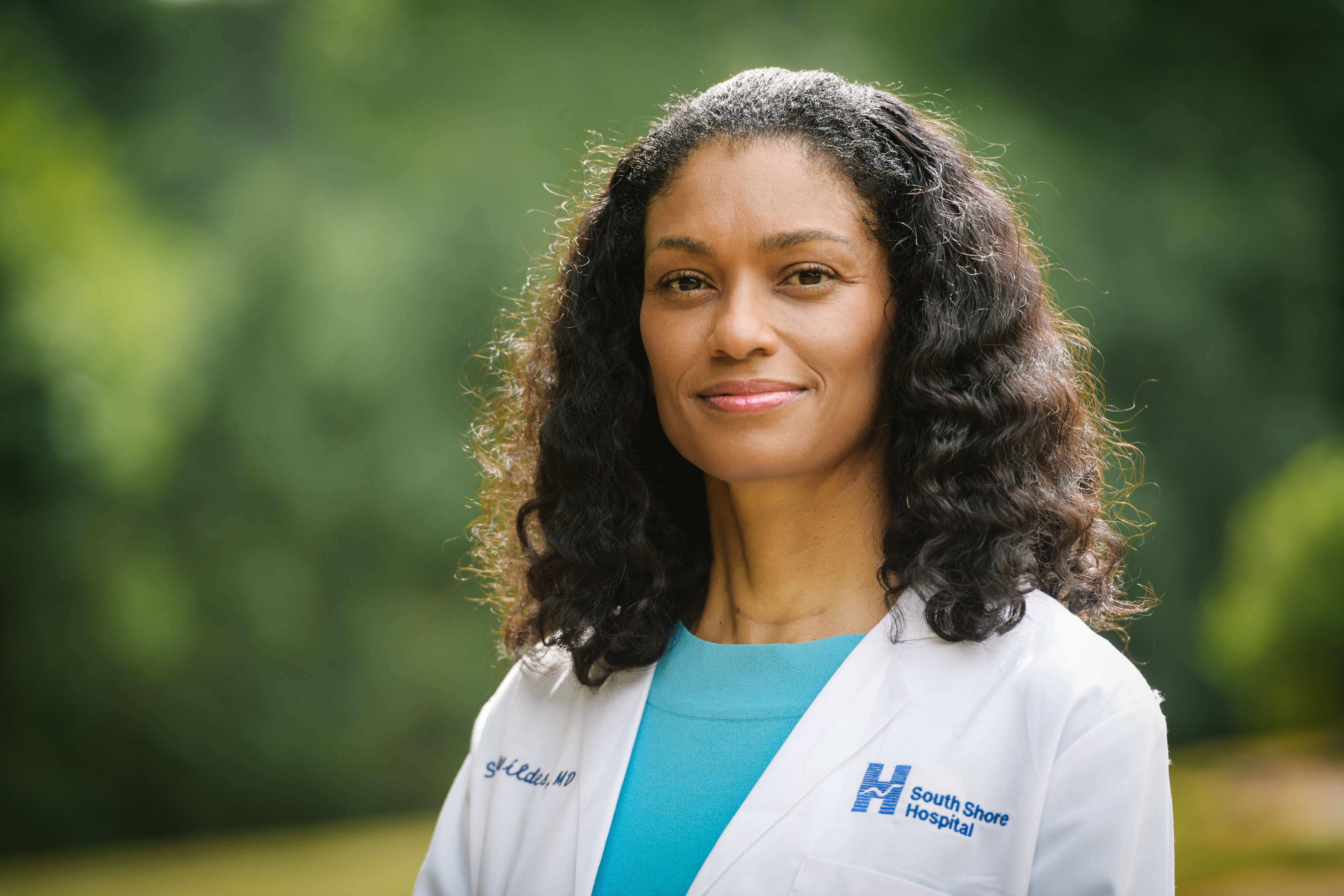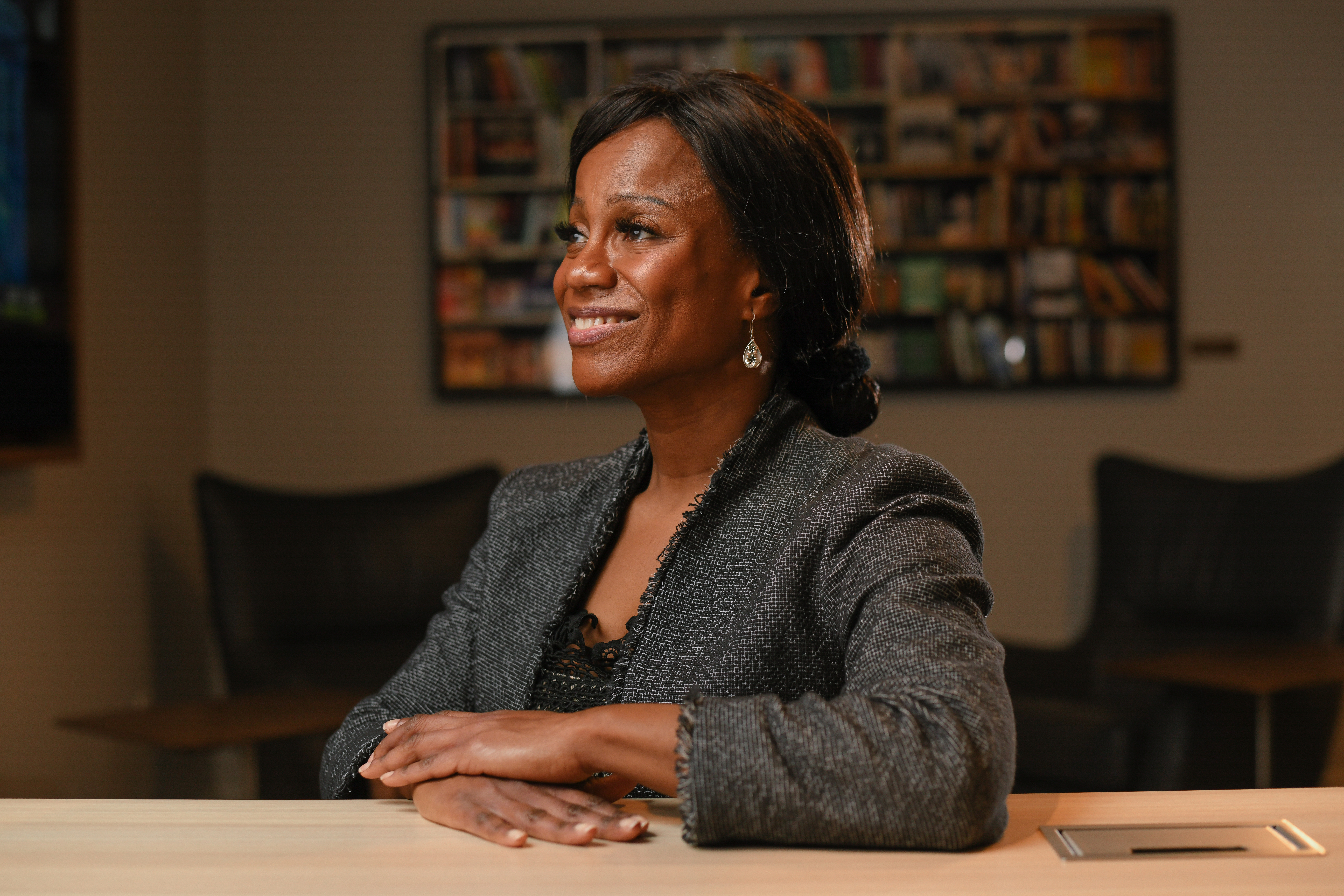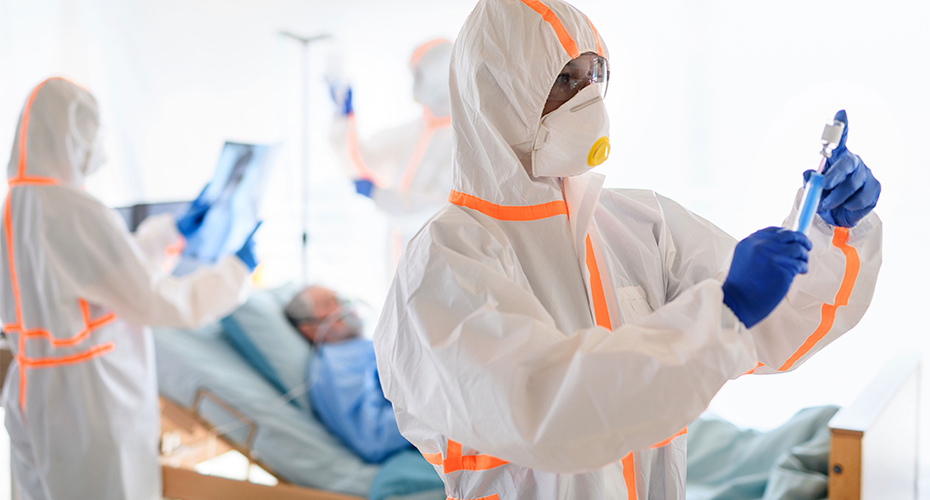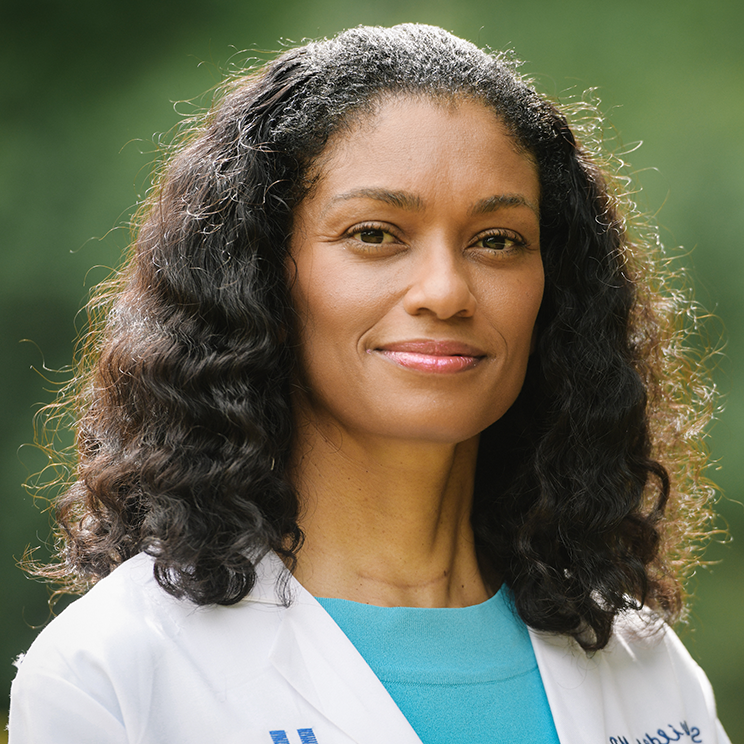Aug 21, 2020
Facing twin crises: Racism and a viral pandemic
Coverage is proud to publish columns featuring the perspectives of Black women physicians who belong to the Diva Docs network in Greater Boston. Today, Dr. Simone Wildes, an infectious disease doctor at South Shore Health and a member of the Department of Public Health Equity Advisory Group, shares her thoughts on COVID-19 and racial disparities with Dr. Philomena Asante, leader of Diva Docs Boston and creator of the Diva Docs series for Coverage.
When I was growing up in rural Jamaica, my mother, a midwife, was the only source of health care in our region. At a very young age, I saw death and suffering. That inspired me to become a physician, so I could help people like my neighbors.
I moved to the U.S. to attend college, and when I was in my internship in internal medicine at Hahnemann University Hospital in Philadelphia, I met Dr. Allan Tunkel, an infectious disease physician with a depth of knowledge and a captivating teaching style. He became my mentor and inspired me to pursue an infectious disease fellowship. This field allows me to solve complex cases and help patients return to healthy lives, which is deeply rewarding.
As an infectious disease physician, I diagnosis and treat infections caused by bacteria, fungi, viruses like SARS-Cov-2 and HIV, and parasites like the ones that often infected my neighbors when I was growing up in Jamaica. I treat pneumonia, tick-borne illnesses like Lyme disease, and complicated urinary tract, bone and joint infections, among many others. My job is to try to figure out which pathogen is causing an illness, and then give the appropriate treatment.

On the front line
Professionally and personally, the past six months are unlike anything I’ve ever experienced. The demands have been exhausting – and yet, exhilarating. For an infectious disease doctor, being in the midst of a pandemic, on the front line, is fascinating. All the action is there -- trying to figure out the best treatment options, how to educate the public about public health, how the hospital can adapt to the pandemic, and how to work in partnership with our nurses and staff, who are awe-inspiring. This is what infectious disease doctors live for.
But at great personal cost.
When the pandemic first hit, I had a talk with my husband, Brian: “We have the will, you know, if anything should happen.”
That is not the kind of conversation that you want to have with your loved one, but it’s the reality. We don’t have family here in Massachusetts, and so who would take care of our two young daughters if my husband and I got sick? It is just us. It was a very unnerving, emotional time for us.
During the surge, I didn’t give hugs at home. I slept in a separate room. I wore a mask at home. The hours were long. I can’t tell you how many days I came home completely drained. It is so hard to be so exhausted when you get home that you can’t even help your children with their schoolwork.
Intertwined crises: Structural racism and a pandemic
This pandemic is unique in many ways, including the impact it has had on Black and Latinx patients. There is no innate genetic reason for the higher infection and death rates among these populations: they stem, at least in part, from health disparities that long pre-date COVID-19. For example, African Americans as a population have higher rates of diabetes and hypertension, which are risk factors for severe outcomes from COVID-19.
We see structural issues at play: Some COVID-19 patients became severely ill because they did not have primary care doctors they could speak to when they began to develop symptoms. Some did not have an internet connection for telehealth.
We see the effect of disparities in employment and in workplace benefits like sick and family leave. In the U.S., frontline workers are disproportionately people of color, and they didn’t have the luxury of staying safely at home. They had to go to work at grocery stores, nursing homes, hospitals, delivery services, and other crucial workplaces. If they didn’t work, they didn’t get paid, and they couldn’t buy food or medicine for their families. Many of our COVID patients told me that when they were working, they didn’t have masks or gowns or gloves to keep themselves safe.
We see the effect of income and housing disparities. Physical distancing is impossible in crowded living situations, and overcrowding in housing is one of the factors that causes COVID-19 to spread.
Early in the surge, patients with limited incomes had to make hard choices when they had symptoms and wanted to get tested at one of the few testing sites available back then: "Do I take crowded public transportation to a testing site in another town and risk getting infected or infecting others? Do I even have funds to take public transportation?"
We have more access to testing now, but health disparities continue to play a tragic role in the spread of this virus.
What steps you can take
We are likely to have a second wave of infections in Massachusetts this fall. There are seven tips I give every patient to help them protect themselves and others from getting infected with COVID-19.




Questions to ask your doctor if you are infected with COVID-19
If it’s a mild case:
- Ask your doctor how to manage the disease at home – for instance, how best to hydrate and what fever-reducing medication is appropriate.
- Ask how long you should self-quarantine.
- Ask what symptoms indicate you may need to go to the hospital -- for example, shortness of breath, a persistent high fever and chest pain.
If you are hospitalized:
- You or your loved one should ask your doctor what treatment options are available. Are there clinical trials that may be appropriate?
- Ask what complications might occur. Is it possible you will be put on a ventilator? Are blood clots a concern? Should you be concerned about renal failure, or the possibility of dialysis?
- And ask what to expect after you are discharged after hospitalization. Can you expect neurological or other issues? Will there be lingering fatigue or weakness?
There might not be answers readily available to all these questions, but it’s important to have these discussions so you can take an active, informed part in making decisions about your own care.

Addressing health disparities
We have more than 5 million confirmed cases of coronavirus in the US, and we are still learning how it affects different populations.
I am a member of the Massachusetts Department of Public Health Equity Advisory Group, and we are looking at how we can improve data collection and analysis of data in a rapid manner for different populations.
When the pandemic began, we were not collecting a lot of data on how this was affecting different populations.
As we started gathering detailed information on infections, hospitalizations and deaths, we realized how devastating the impact has been on Black and Latinx communities.
Physicians and hospitals need to partner together to make sure that we’re collecting high-quality data, so we can determine how to redistribute our resources. Without data, we can’t make good decisions about how to reach patients who are most vulnerable and most in need of testing, personal protective equipment and adequate health care.
An honest, transparent approach to a vaccine
Looking ahead, we have to anticipate health disparity issues when a vaccine is available.
First, we will have to address fear and suspicion stemming from the history of racism in the medical profession in the U.S. For example, the 40-year federal Tuskegee study, which deliberately withheld syphilis treatment from African-American men, has left a deep legacy of mistrust among African Americans. We in the health field must be honest and transparent. We also must build bridges to allow understanding, and the fast and appropriate dissemination of information.
We have to ensure community engagement, and public-private partnerships to educate the public.
There must be an open and candid dialogue to help the public understand that health officials are making sure that the vaccine is safe and effective, and that as physicians, our oath is to do no harm.
To make it through this pandemic, we have to work together.
PHOTOS BY FAITH NINIVAGGI

